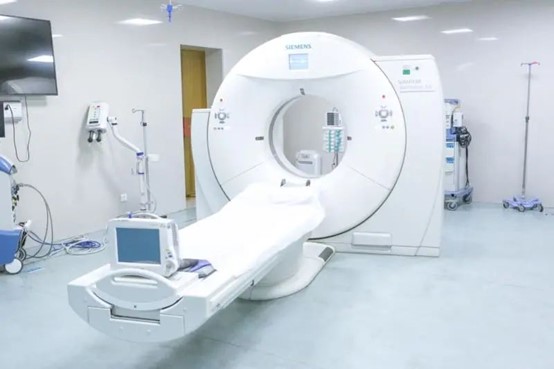Recently, Wahaha officially announced the passing of its founder and chairman, Zong Qinghou, at the age of 79 due to illness. Media reports revealed that Zong had been battling advanced lung cancer and was admitted to the ICU before the Chinese New Year. His lung cancer was possibly closely linked to his decades-long smoking history. Zong was a heavy smoker, consuming an average of two packs a day for over 30 years. However, he decided to quit smoking several years ago due to health concerns.

Additionally, the topic "29-year-old woman diagnosed with lung cancer without symptoms" has become a trending search. The young woman, without apparent symptoms, discovered a nearly 5cm nodule during a CT scan after a week of persistent coughing. Doctors diagnosed her with malignant lung tumors, shedding light on this "silent killer."

The early symptoms of lung cancer primarily involve tumor compression and invasion. However, early-stage lung cancer usually exhibits no noticeable symptoms due to the large volume of the lungs. It's only when the tumor reaches a certain size, entering the intermediate or advanced stage, that distinct symptoms such as coughing, phlegm production, chest tightness, shortness of breath, and even difficulty breathing become evident.
Early Symptoms of Lung Cancer:
01. Coughing: Persistent, irritating cough or dry cough with minimal, sticky phlegm. If unexplained coughing persists for 2-3 weeks, seeking medical advice is recommended.
02. Hemoptysis and Bloody Phlegm: Intermittent, recurrent small amounts of blood-tinged phlegm, bright red in color, often with blood streaks or clots. Severe cases may lead to significant hemoptysis.
03. Chest Pain: Varied degrees of chest tightness and pain, exacerbated during deep breathing and coughing, accompanied by intermittent chest pressure, extending to the shoulders, back, and arms.
04. Shortness of Breath: If a person experiences shortness of breath during routine activities without cardiovascular issues, lung cancer screening is advised.
05. Fever: Lung cancer-related fever can manifest in different forms, ranging from low-grade to high-grade. Unexplained fever should raise concerns.
06. Finger Changes: In the early stages, lung cancer patients may experience joint swelling in fingers and toes, with nail protrusion and bending, often accompanied by intense pain. It can also manifest as burning pain in elbow, wrist, ankle, knee, and finger joints. If these symptoms occur, attention should be given to the possibility of lung cancer.
It's noteworthy that some individuals may discover a lung nodule during a checkup without apparent discomfort. Still, vigilance is necessary, especially for isolated, solitary lung nodules, requiring regular follow-ups.
High-Risk Groups for Lung Cancer:
- Individuals aged 40 and above.
- Long-term smokers (including secondhand smoke exposure): The risk of developing lung cancer increases with younger age at initiation, longer duration, and higher daily cigarette consumption.
- Those with a family history of lung cancer: A significant familial aggregation exists, with a 2-3 times higher risk if a first-degree relative has lung cancer.
- Occupational factors: Prolonged exposure to arsenic, chromium, nickel, petroleum, coal tar, mustard gas, asbestos, and certain radioactive substances can increase the risk of lung cancer.
- Individuals with underlying lung conditions: Those with chronic obstructive pulmonary disease (COPD), diffuse pulmonary fibrosis, or a history of pulmonary tuberculosis are at higher risk.
If you or your family members fall into the high-risk categories mentioned above, regular lung screenings are advisable. Currently, low-dose thin-slice CT is recognized as the gold standard for lung cancer screening. CT scans have higher resolution than chest X-rays, enabling more accurate detection of lung nodules. The radiation dose from low-dose spiral CT is minimal, posing minimal harm to the body.

Preventive Measures for Lung Cancer:
✍ Quit Smoking: Cigarettes, as a known carcinogen, are directly associated with lung cancer. Quitting significantly reduces the incidence of lung cancer. Non-smokers should also avoid secondhand smoke and stay away from smoking environments.
✍ Avoid Harmful Substances: When working in toxic environments, take protective measures, such as wearing dust masks. Healthcare workers should wear lead aprons to shield against radiation, reducing occupational hazards. Avoid indoor smoke and pollution, such as formaldehyde and radon. Use environmentally friendly materials in home decoration, and minimize time spent in recently renovated public spaces. Reduce cooking methods like frying, deep-frying, and barbecuing at home, and ensure good kitchen ventilation. During smoggy days, limit outdoor activities, wear anti-smog masks, and avoid lingering in heavy traffic areas to reduce exposure to car emissions.
✍ Balanced and Healthy Diet: Consume more fruits and vegetables rich in carotenoids, vitamin C, vitamin E, and folic acid, promoting lung health. Avoid spicy and irritating foods, reduce the use of condiments, and refrain from consuming grilled or fried foods. Maintain a low-salt, low-fat, and high-quality protein diet for overall nutritional balance.
✍ Maintain a Positive Mindset: A person's immune system weakens when emotions are low, providing an opportunity for diseases to thrive. Maintaining a positive mood can, to some extent, prevent the occurrence of lung cancer.
✍ Maintain a Healthy Lifestyle: Establish regular routines, avoid staying up late, balance work and rest, engage in physical exercise, and enhance disease resistance.
These proactive measures and regular screenings contribute to early detection and prevention of lung cancer.